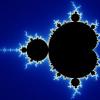Seeing the Distant Stars
Have you ever wondered how spacecraft like the Hubble Telescope or the Kepler can see so remarkably far into space? The physics behind it lies in how light bends around planets and stars as it propagates through space. Einstein showed that massive objects bend the four-dimensional spacetime continuum (with the fourth dimension being time). As a result, light passing by massive objects, like planets, stars, and black holes, bend around the objects as they pass by.
The bending of light can magnify or distort the image of a particular object in space, so a colleague of Einstein asked him if it was possible to use this bending phenomenon to create super-telescopes that could peer into the depths of space. Einstein, despite viewing such a notion as pointless, showed mathematically that creating a telescope that used the bending of light around massive objects was indeed possible; however, in the paper he published on the subject, Einstein made a point of noting that such a notion was impractical and would never actually be used. Less than fifty years later, we have the Hubble Telescope orbiting the Earth, giving us breathtaking images of the limitless depths of space. So much for Einstein's pessimistic prediction!
Sadly, the Kepler spacecraft recently suffered a malfunction in one of its reaction wheels, which serve as a pointing device for the spacecraft. The malfunction cannot be fixed by astronauts, as with the Hubble telescope, because the Kepler is too far away from Earth. Thus, the malfunction threatens to put the Kepler spacecraft out of business. You can read about the incident here:
http://www.sciencenews.org/view/generic/id/350445/description/Kepler_mission_may_be_over
Thankfully, all is not lost. The Kepler was intended to collect data for four years, and it slightly exceeded that goal. Also, of the four years of data that the spacecraft collected, much of the last year of data has not been analyzed, so while no new data will be coming in (or at least, less data may be coming in), the scientists at NASA have plenty of not-yet-analyzed data to keep them busy. With already several discoveries of Earth-like planets orbiting distant stars, the remaining data seems promising to astronomers.



3 Comments
Recommended Comments